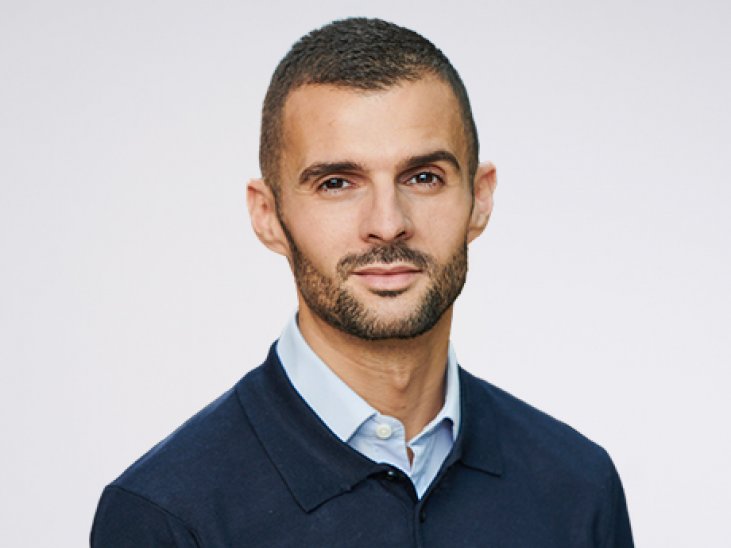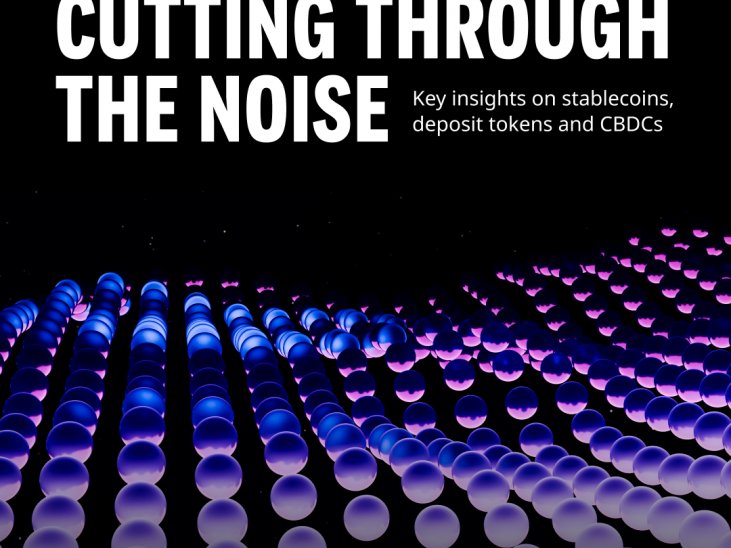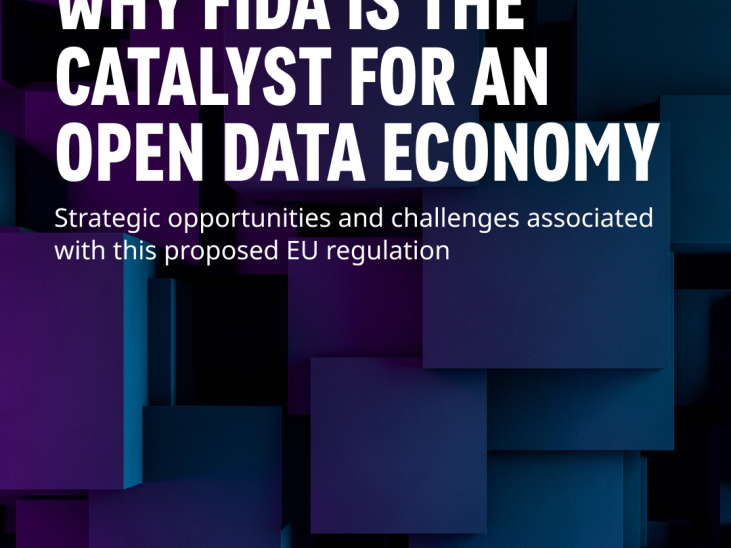The future of payments – it’s time for big steps!
The 2021 edition of Euroforum’s annual conference on the future of payments (‘Toekomst van het Betalingsverkeer’) – which took place in Amsterdam’s Beurs van Berlage on 9 September and was actually held as a physical event rather than a virtual one – attracted over 200 attendees. INNOPAY’s Josje Fiolet was among them, and she has written a blog to share the key insights from the conference. It was apparent that COVID-19 has accelerated the move to digital payments, and tokenisation is here to stay. Above all, there was a clear focus on what you can do right now to make your customer’s life easier.
I’d almost forgotten what it was like to attend an on-site conference. It was so nice to see so many familiar faces and to meet new people, to chat about our daily work and exchange different perspectives on payments! There was a palpable buzz and nearly everyone stayed for the networking drinks at the end of the day.
COVID-19 accelerated the move to digital payments
One of the key questions during the conference was whether the pandemic has really changed the way people pay. There seemed to be a general consensus that while COVID-19 has accelerated the move to digital payments, the trend was actually already underway beforehand. However, the pandemic did cause a shift in buying behaviour, according to a keynote speaker from Mastercard, with consumers spending more money on things like pets, family photo albums and ‘drinking from home’. Based on the self-conscious chuckles from the audience, we can assume the latter was definitely true!
All the payment players that spoke during the conference provided solid evidence of the growth in digital transactions, successively trumping each other with examples of innovative solutions, extensive reach and impressively high numbers of transactions. For example, iDEAL expects to hit the 1 billion transaction mark this year and is offered by 200,000 merchants across the globe. The speaker stated that 85% of transactions are now finalised via mobile and – fuelled by this consumer behaviour – iDEAL 2.0 is centred around simplifying the check-out process. Ultimately, the Dutch Central bank topped them all, presenting itself as the backbone of all retail transactions with an average daily value of €250bn.
Tokenisation is here to stay
One thing that became clear across all presentations, whether by iDEAL, ING, Mastercard or Google, is that tokenisation is here to stay. Although the concept is far from new and has been on the agenda for quite some time, the real-life examples showed that tokenisation is now making payments more secure and seamless. In Mastercard’s case, it is collaborating with Picnic and Rabobank to tokenise the debit card and enable one-click payment. Meanwhile, the iDEAL user token pushes the preferred bank towards the online merchant, which reduces the number of times the consumer needs to click. It’s all about making the customer’s life easier.
The option of one-click or two-click pay depends on whether or not the customer is known. This is where digital identity comes in, which is at the core of payments. The speakers discussed the proliferation of digital identities, and fragmentation of the market is seen as a challenge. Did you know you are likely to have approximately 200 logins and passwords? It is not yet clear who should solve this and become the primary identity issuer. Banks? Fintechs? Governments? Everyone agreed that waiting for regulation would take too long, and that it would help if the government would mandate collaboration amongst market parties. Interested in a scheme, anyone?!
One benefit of digital identity in payments is that knowing the customer makes it easier to store their tokens and hence make the payment process even more seamless – and you can offer the customer much more. Google revealed how it plans to integrate different data-driven and AI-driven services (beyond payments) in the Google Wallet, such as transit, ticketing and loyalty. Although such services won’t all become available in the Netherlands this year, this is yet another sign of Big Techs strengthening their position in the payment landscape and is therefore definitely something to keep an eye on.
While this is an interesting development for some, it’s a concern for others. Like many other central banks, the Dutch Central Bank is exploring the topic of Central Bank Digital Currencies (‘Digital Euro’), whereby the customer holds an account directly with a central bank. This avoids reliance on non-European parties who may be hard to regulate and oversee. It was surprising to hear that research by the Dutch Central Bank showed that 50% of respondents were positive about the Digital Euro development, despite it receiving little press coverage. The Dutch Central Bank will not decide how to pursue this issue for another two years, but described it as “realistic that the Digital Euro will be introduced”.
Future concerns and opportunities
Another area of concern is the increase in fraud. Annual non-bank fraud damages reach EUR 40 million this year. In this type of fraud, the customer is misled by fraudsters to initiate the transaction themselves. So seamless is great, but it also has negative side effects – especially for those who are less digital-savvy, according to the Dutch Central Bank. And at 15% of the Dutch workforce, this is a relatively large group, so it makes sense to develop new solutions for them. Fortunately, besides airing its concerns, the Dutch Central Bank also complimented all the various parties present at the conference by saying that the Dutch public generally seem to have significant trust in payment transactions.
All those various parties – banks, fintechs, payment providers and the like – each play an important role in the industry, and many of them mentioned collaboration as the key to success. They all see that the ecosystem is growing, with new and niche parties entering the market and becoming integrated in the payment value chain. Third Parties under PSD2 are one example of such new entrants. PSD2 is just the beginning of what is expected to turn into a broader data play. Although it has not yet reached its full potential, Open Banking is no longer just a theory. Concrete use cases were presented, and the discussion evolved towards the potential of Open Finance and the wider open data economy. As highlighted by our own Luc van Oorschot, payments lead at INNOPAY, banks and other payment players can turn this into an opportunity, building on their trusted position on the one hand and on their current capabilities on the other. By acting as a data custodian, not only for payment transactions but also for all kinds of transactions (e.g., digital identity, data sharing) the established players can develop new propositions and revenue models and safeguard their position in the market.
Sustainability and inclusion
It was also great to see that sustainability and inclusion were on the agenda. VISA highlighted the rise of the ‘conscious consumer’ who is seeking to connect with purposeful brands. According to one study, 75% of millennials are estimated to be willing to change their consumption habits to reduce the environmental impact. And sustainability goes beyond just environmental issues; it extends all the way to Digital Corporate Social Responsibility, whereby organisations proactively strive for good business conduct such as by giving their customers control over their own data.
The Dutch Central Bank stressed that payments should be inclusive and available to all. Mastercard shared details of its inspiring initiative that allows customers to choose how their name is shown on their card. This can help transgender people to feel more included, for example. A small change with big impact – we need more of that!
What particularly struck me at my first real-life event since the pandemic was that the tone of the event and of the speakers differed slightly from before. There was less focus on future innovation possibilities or regulatory constraints in the domain of digital transactions, and more focus on today: what can you do right now to make your customer’s life easier?
While we have discovered over the past 18 months that virtual presentations and events are perfectly functional, nothing beats seeing each other in person, chatting and exchanging thoughts with fellow industry professionals and finding new inspiration from one another. If you would like to discuss the exciting world of payments in more detail, please don’t hesitate to reach out to us. We’re still buzzing from the conference and are excited to share all our new insights with you!




